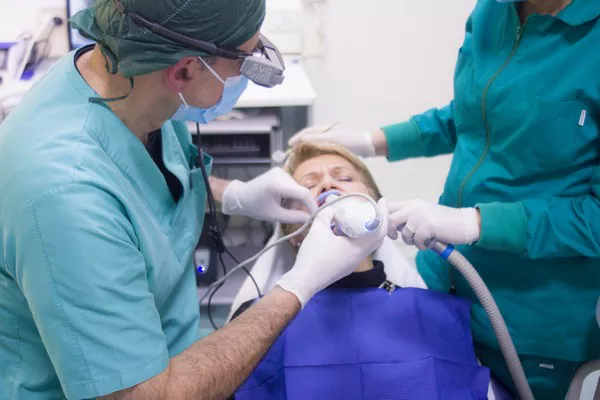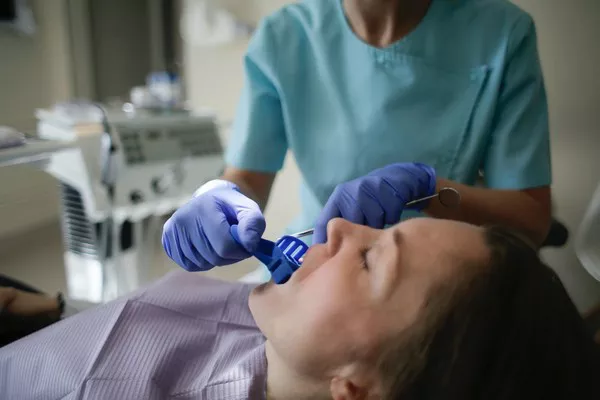Teeth whitening has become increasingly popular as individuals seek to achieve a brighter, more radiant smile. However, some people may notice white spots on their teeth after using whitening strips, which can be concerning. This article explores the reasons why teeth whitening strips may leave white spots, including the explanation of white spots, causes of white spots, the role of whitening strips, prevention and management strategies, when to see a dentist, and the importance of long-term oral health.
Explanation of White Spots
Pre-existing Conditions
White spots on teeth may not always be a direct result of teeth whitening. In many cases, these spots are pre-existing conditions on the enamel that become more visible after whitening due to the removal of surface stains. These spots can be caused by various factors, including mineral loss, enamel hypoplasia, or fluorosis, and may have been present before whitening treatment.
Causes of White Spots
Hypocalcification is a common cause of white spots on teeth. It occurs when there is a loss of calcium in the tooth enamel, resulting in areas that appear lighter or whiter than the surrounding enamel. Hypocalcification can be caused by factors such as poor oral hygiene, excessive fluoride exposure during tooth development, or certain medical conditions.
Role of Whitening Strips
Dehydration of Enamel
Whitening strips contain bleaching agents such as hydrogen peroxide or carbamide peroxide, which penetrate the enamel to break down stains and discoloration. While these agents can effectively whiten the teeth, they can also dehydrate the enamel temporarily. Dehydration of the enamel can make pre-existing white spots more noticeable and may contribute to the development of new spots in some cases.
see also: How much does Glo whitening cost?
Prevention and Management
Proper Application
To minimize the risk of white spots when using whitening strips, it is essential to follow the manufacturer’s instructions carefully. Proper application involves ensuring that the strips adhere securely to the teeth and avoiding contact with the gums, which can cause irritation. It is also important to use the strips for the recommended duration and frequency to achieve optimal results without overexposure.
Rehydrating the Enamel
After whitening treatment, it is essential to rehydrate the enamel to restore its moisture balance and minimize the appearance of white spots. Drinking plenty of water and using fluoride-based oral care products can help rehydrate the enamel and promote remineralization. Additionally, avoiding acidic or abrasive foods and beverages can help protect the enamel from further damage.
When to See a Dentist
Persistent White Spots
If white spots persist or become more pronounced after whitening treatment, it is essential to consult with a dentist. Persistent white spots may indicate underlying dental issues that require professional evaluation and treatment. A dentist can assess the cause of the white spots and recommend appropriate interventions to address them effectively.
Underlying Dental Issues
In some cases, white spots may be a sign of underlying dental issues such as decay, enamel erosion, or demineralization. A dentist can conduct a thorough examination of the teeth and gums to identify any potential problems and develop a personalized treatment plan to address them. Early intervention is key to preventing further damage and restoring oral health.
see also: How much does teeth whitening cost at aspen dental?
Long-Term Oral Health
Overall Oral Care
Maintaining good oral hygiene and overall oral health is essential for preventing white spots and other dental issues. This includes brushing the teeth twice daily with fluoride toothpaste, flossing daily to remove plaque and food debris, and visiting the dentist regularly for check-ups and cleanings. By practicing consistent oral care habits and seeking timely dental care, individuals can help prevent and address issues like white spots to maintain a healthy and beautiful smile.
Conclusion
While white spots on teeth after whitening treatment can be concerning, they are often harmless and may be pre-existing conditions that become more visible after whitening. Understanding the causes of white spots and taking preventive measures can help minimize their appearance and maintain overall oral health. If white spots persist or cause concern, it is essential to consult with a dentist for evaluation and appropriate treatment. By prioritizing long-term oral care and seeking professional guidance when needed, individuals can achieve and maintain a bright, healthy smile.
FAQs about Teeth Whitening
1. How Long Does It Take for Teeth to Rehydrate After Whitening?
After teeth whitening, it can take some time for your teeth to rehydrate fully. This process varies depending on factors such as the type of whitening treatment used and individual oral health. Generally, it may take a few hours to a day for your teeth to rehydrate fully after whitening.
2. How Long Does It Take for Teeth Pores to Close After Whitening?
Teeth pores, also known as enamel microchannels, can open during the whitening process to allow the bleaching agent to penetrate the enamel. The time it takes for these pores to close after whitening can vary. In most cases, teeth pores will begin to close within a few hours to a day after whitening, but complete closure may take up to 48 hours.
3. What Is the Residue on Teeth Whitening Strips?
The residue left on teeth after using whitening strips is often a combination of the whitening agent and saliva. Whitening strips are designed to adhere to the teeth and deliver the whitening agent directly to the enamel. As the strips dissolve or are removed, some residue may remain on the teeth. This residue typically dissipates over time and can be removed by brushing and rinsing the teeth.
4. Why Do My Teeth Look Weird After Whitening Strips?
After using whitening strips, some people may notice temporary changes in the appearance of their teeth, such as increased transparency or uneven whitening. This can occur due to factors such as:
Temporary Dehydration: Whitening treatments can temporarily dehydrate the teeth, making them appear more translucent or unevenly colored. Rehydration of the teeth over time typically resolves this issue.
Uneven Whitening: If the whitening strips are not applied evenly or if there are discrepancies in the application process, the whitening results may appear uneven.
Sensitivity: Some individuals may experience temporary tooth sensitivity after whitening, which can affect the way the teeth look and feel.
You Might Be Interested In
































